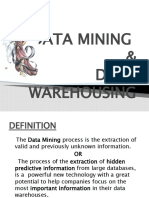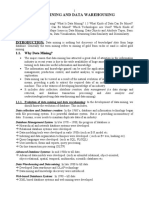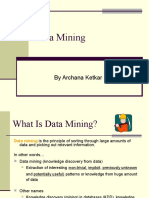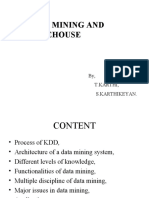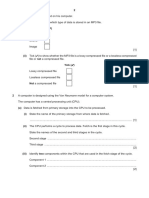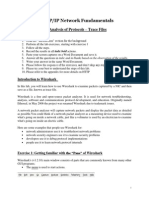0% found this document useful (0 votes)
12 views11 pagesData Preprocessing Personal
Data warehousing is a centralized storage system for historical data used for analysis and reporting, while data mining involves discovering patterns and insights from large datasets using statistical and AI techniques. Both processes are essential for effective data management, with data mining relying on the structured data provided by data warehouses. The Knowledge Discovery in Databases (KDD) process outlines the steps for extracting valuable information from data, including data selection, preprocessing, transformation, mining, evaluation, and presentation.
Uploaded by
raisahab2199Copyright
© © All Rights Reserved
We take content rights seriously. If you suspect this is your content, claim it here.
Available Formats
Download as DOCX, PDF, TXT or read online on Scribd
0% found this document useful (0 votes)
12 views11 pagesData Preprocessing Personal
Data warehousing is a centralized storage system for historical data used for analysis and reporting, while data mining involves discovering patterns and insights from large datasets using statistical and AI techniques. Both processes are essential for effective data management, with data mining relying on the structured data provided by data warehouses. The Knowledge Discovery in Databases (KDD) process outlines the steps for extracting valuable information from data, including data selection, preprocessing, transformation, mining, evaluation, and presentation.
Uploaded by
raisahab2199Copyright
© © All Rights Reserved
We take content rights seriously. If you suspect this is your content, claim it here.
Available Formats
Download as DOCX, PDF, TXT or read online on Scribd
/ 11













